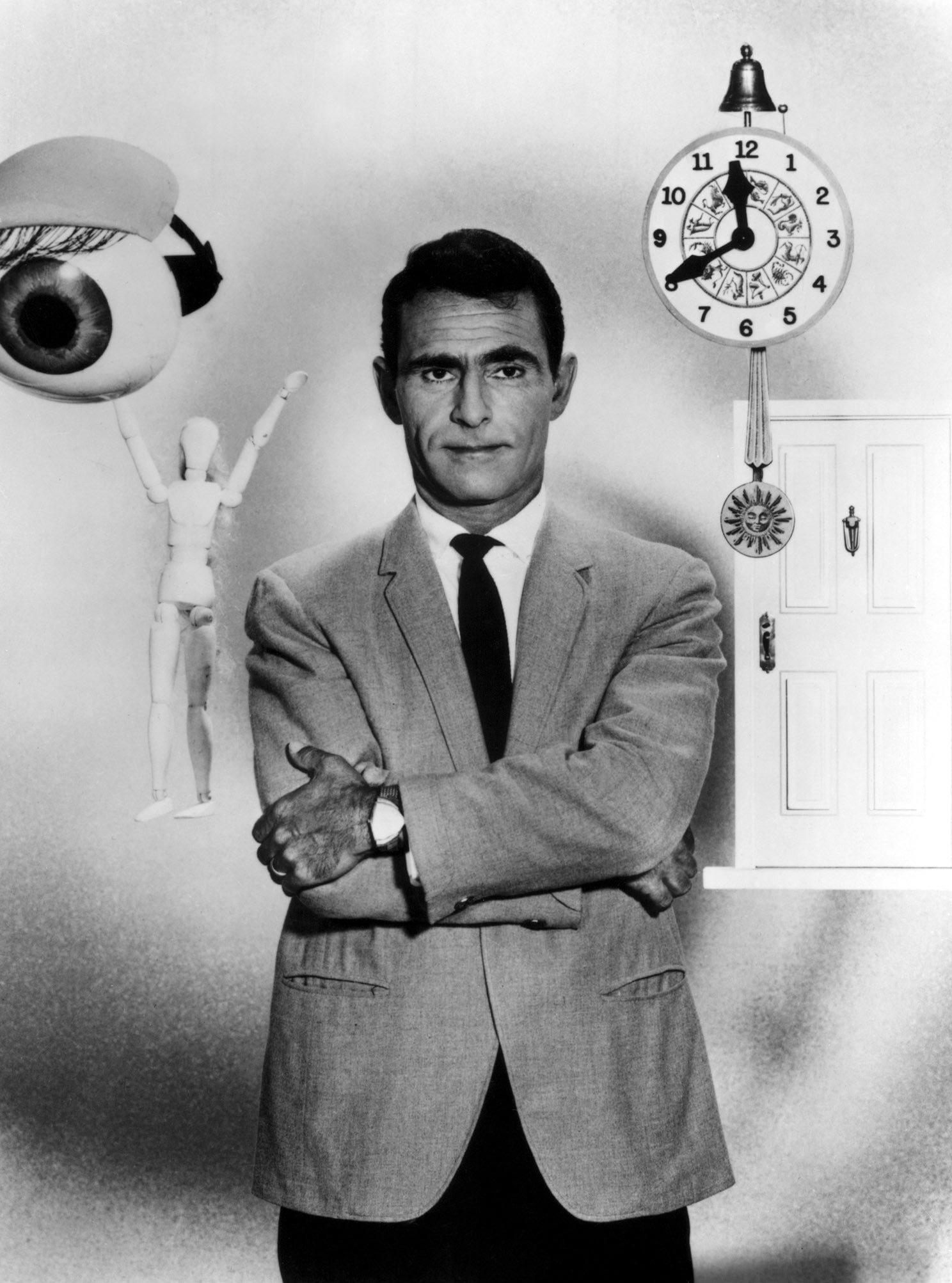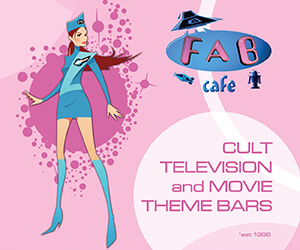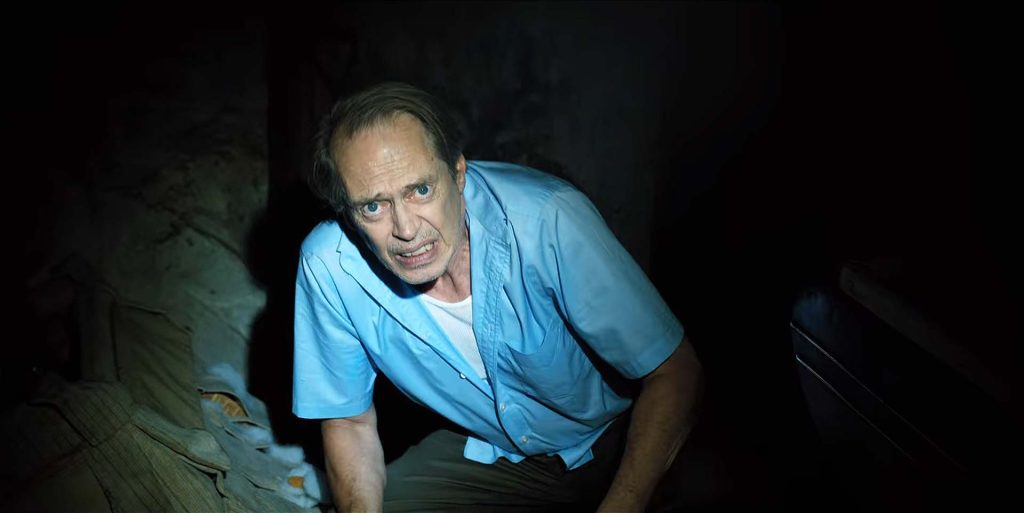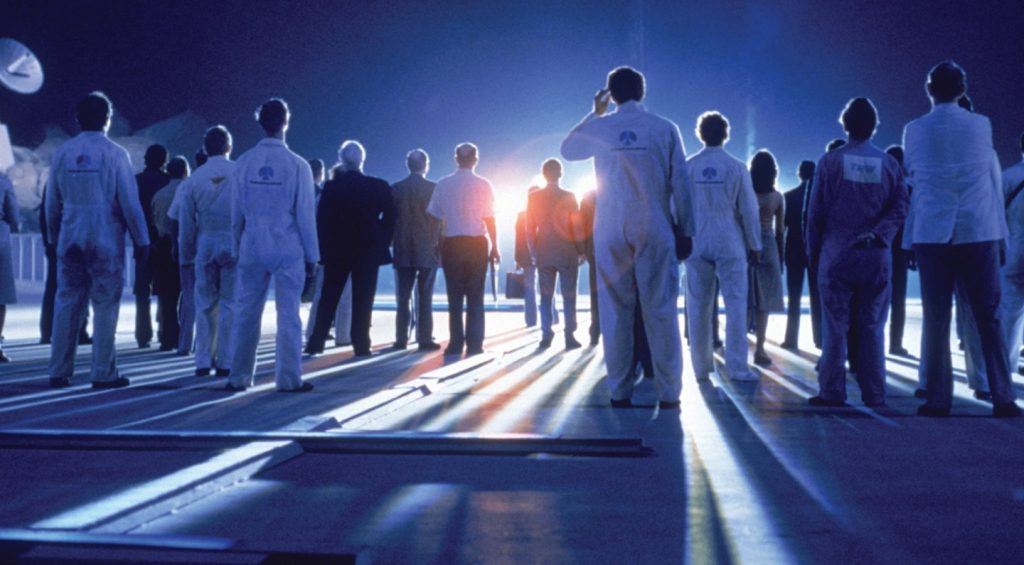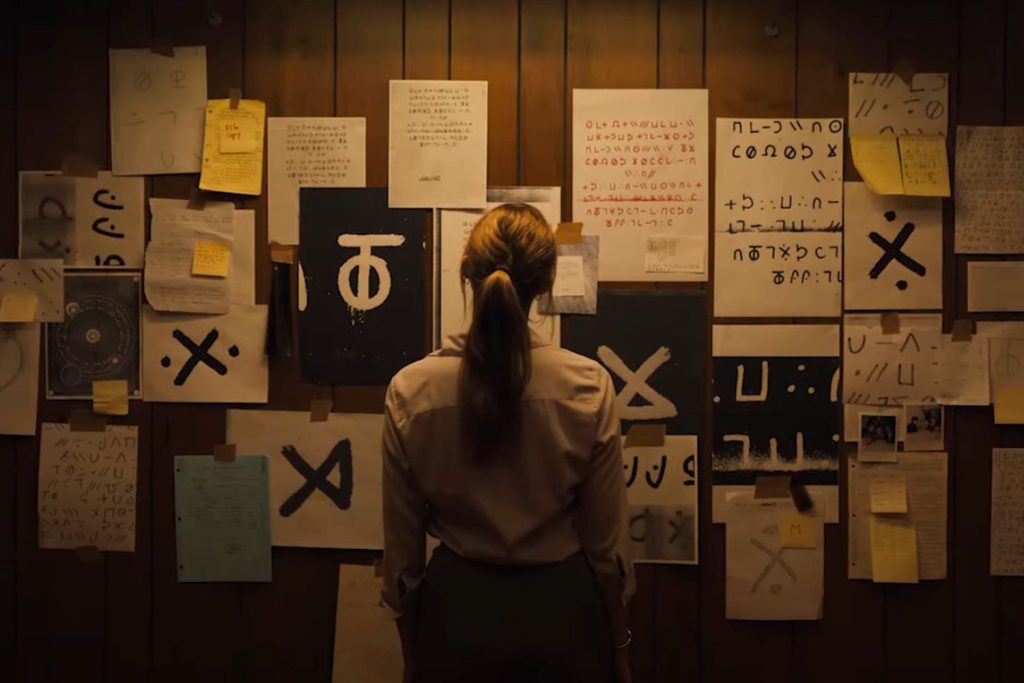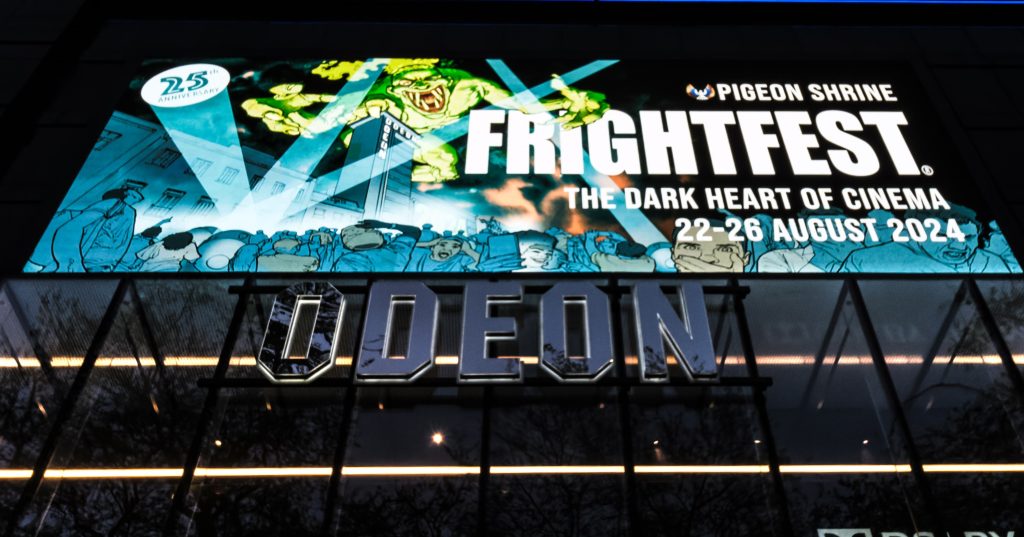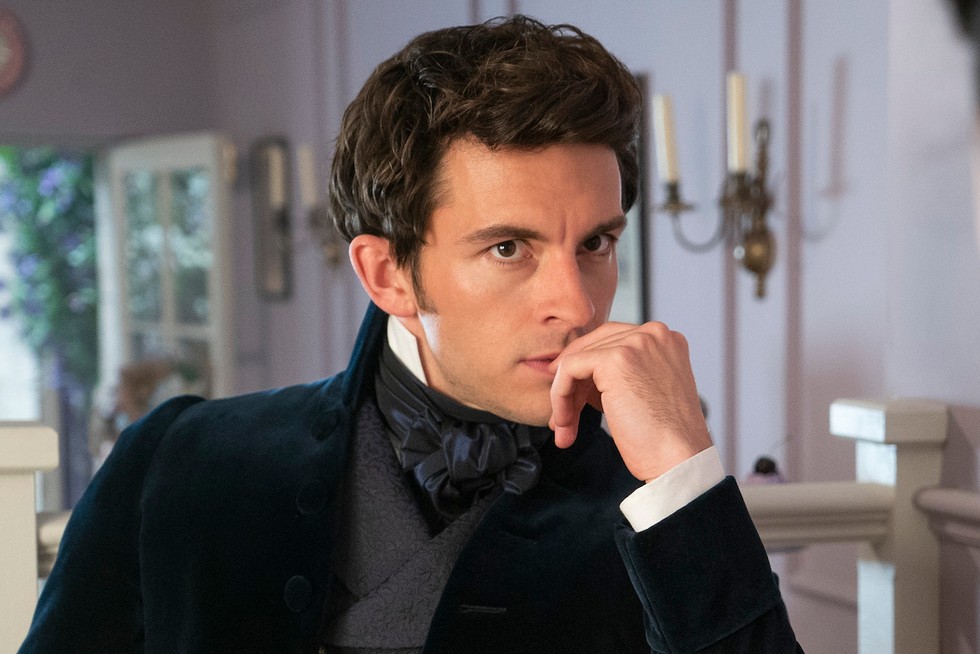Imagine if you will, television in its infancy. A wasteland of monochrome situation comedies, westerns, and cop shows. Now imagine Rod Serling, an accomplished and innovative writer of films, plays, and television announcing that he would devote his time to creating, developing, writing, executive producing, and introducing a weekly series of horror and science fiction stories with a clever twist or moral at the end of each episode. The end result was THE TWILIGHT ZONE, inarguably the most innovative and imaginative television show of its time, which garnered more than 18 million viewers during its first run. Since then, thanks to syndication and home video, the show has become woven into the fabric of pop culture all over the world, its original 156 episodes (92 of which were written by Serling over the series’ initial five years), constantly being shown somewhere in the world to this day, sixty-plus years after the debut transmission on October 2nd, 1959, and returns to UK screens via LEGEND to usher in the New Year. We at STARBURST submit, for your approval, this homage to one of our favourite TV shows, and there’s no better way to start than with Mr Serling’s famous introduction…
“You are travelling through another dimension, a dimension not only of sight and sound but of mind. A journey into a wondrous land of imagination. Next stop, the Twilight Zone!”
20. WORDPLAY (1985)
The opening credits of the 1980s Twilight Zone reboot immediately throw you back to the time TV started going through the night in the UK, and Wordplay – the first part of the new incarnation’s second episode – would have been one of the earliest things seen in that late-night slot. As statements of intent go, the first few episodes of the 1980s reboot are bold; Wordplay is directed by Wes Craven, and he would helm quite a few from that first season, along with other horror standouts like Tommy Lee Wallace and William Friedkin. Robert Klein is Bill Lowery, Wordplay’s protagonist, who wakes up one morning to discover that his friends, family, and workmates are beginning to drop unfamiliar words into their conversations; his neighbour refers to his dog as an ‘encyclopedia’, and a colleague asks him where he should take his date for ‘dinosaur’. The problem gets gradually worse until everything Lowery hears is gibberish. Fleeing home, he discovers his son is ill, and rushes him to the hospital, still bewildered. By the story’s end, Lowery is re-learning the language, with the help of his son’s ABC books. As well as being a sympathetic figure, Lowery is also a textbook example of someone suffering from receptive aphasia, and as such Wordplay is not only a chilling, worthy Zone tale but also a clever, real-world referend. | AB
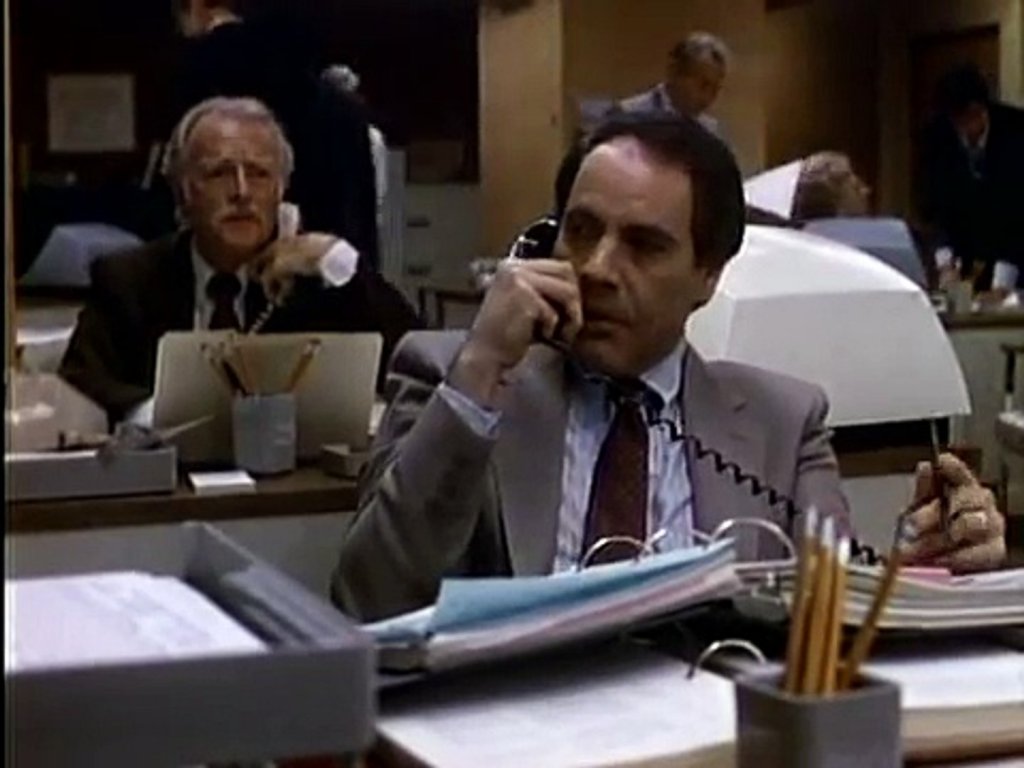
19. LONG DISTANCE CALL (1961)
On Billy Bayle’s fifth birthday, his spooky grandmother gives him a toy telephone then rudely steals the birthday boy’s spotlight by dying. Billy appears to cope with the loss of his grandmother by constantly talking to her on said toy phone. His parents initial concern graduates to alarm when Billy says his grandmother’s lonely and wants him to visit *shudder*. What follows is a darker than usual tale of a dead pensioner apparently talking a five-year-old into offing himself in a variety of ways so she’ll have company. This very effective Season 2 chiller marks the first appearance of toe-headed Billy Mumy. He would later go on to star in two further entries, including revered classic It’s a Good Life in Season 3 and Season 5’s In Praise of Pip. This episode also marks the sixth and final time the show was ever shot on videotape. Switching to tape was a cost-cutting exercise by production company Cayuga, but the quality of the final product was, as Serling himself admitted ‘disastrous’. | ES
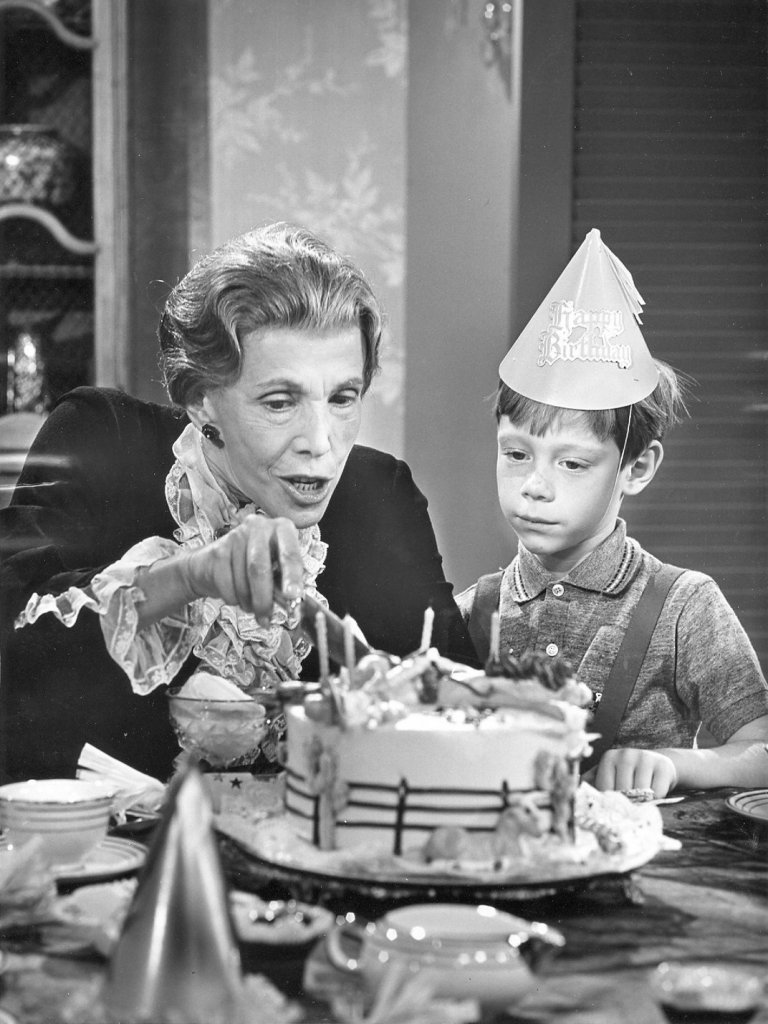
18. MIRROR IMAGE (1960)
Millicent Barnes begins to suspect that all is not right when, while waiting for her delayed bus during an epic thunderstorm, her suitcase can’t be trusted to stay put, the pissy station manager insists she’s been pestering him when she’s done nothing of the sort and, most worryingly, while looking in the bathroom mirror, she sees a duplicate of herself sitting on the bus station bench. Any story dealing with doppelgängers is inherently unnerving, but even more so when their intentions, as with Mirror Image, are subtly implied as sinister. Interestingly, Serling’s inspiration for this episode occurred at an airport: he saw a man across the room wearing the same suit and top coat as him, carrying the same briefcase, and thought “if he turns around and it’s me, what will I do?” It wasn’t. Airing as the last episode before Season 1’s mid-season hiatus, Mirror Image is an underrated gem and a genuinely spooky tale of paranoia and loss of identity. | ES
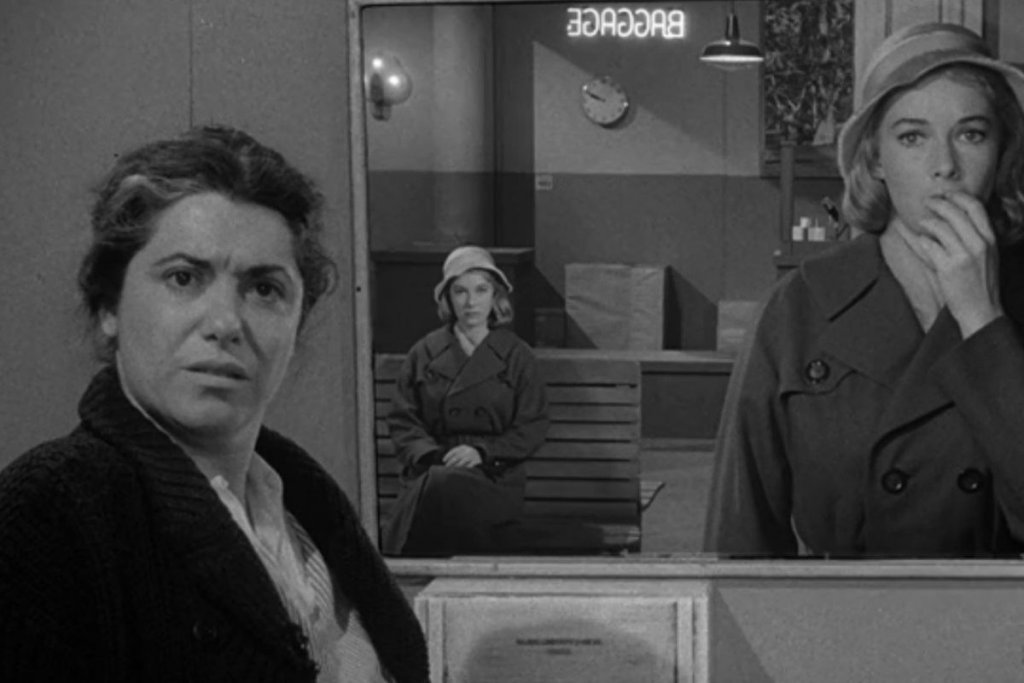
17. FIVE CHARACTERS IN SEARCH OF AN EXIT (1961)
This creepy tale of five oddball types trapped in a room together is a little predictable to modern audiences, but that’s because it’s inspired so many similar works such as Cube and The Fictional Man. It’s the tale of a clown, hobo, ballet dancer, bagpiper, and an army major, all of whom wake up trapped in a mysterious metal cylinder. The five argue and bicker, and fail to co-ordinate an effective escape while bemoaning their existence. The twist is that they are actually toys, trapped in a toy barrel. | EF

16. KICK THE CAN (1962)
The secret to staying young is thinking young in this, the 86th episode. Ernest Truex stars as Charles Whitley, a man desperate to feel young. After seeing a group of children outside his care home, he believes the secret to youth might lie in playing childhood games again. After some debate, the other residents decide to join him outside for a late-night game of kick the can, where they’re magically restored to their childhood selves. The episode ends with Ben, Charley’s best friend who refused to come along, forlornly wishing he’d joined them. A painful lesson for him, a poignant warning to viewers about how to approach ageing. This episode was also adapted for 1983’s Twilight Zone: The Movie and directed by Steven Spielberg. Unfortunately, the change they make to the story – putting everything in the hands of a magical new resident rather than the characters coming to these important realisations on their own – made it one of the weaker segments. It was a disappointing way to pay homage to what many consider the best TZ episode of all time. Thankfully, the original is still available, just as relevant today as it was in 1962. | VB
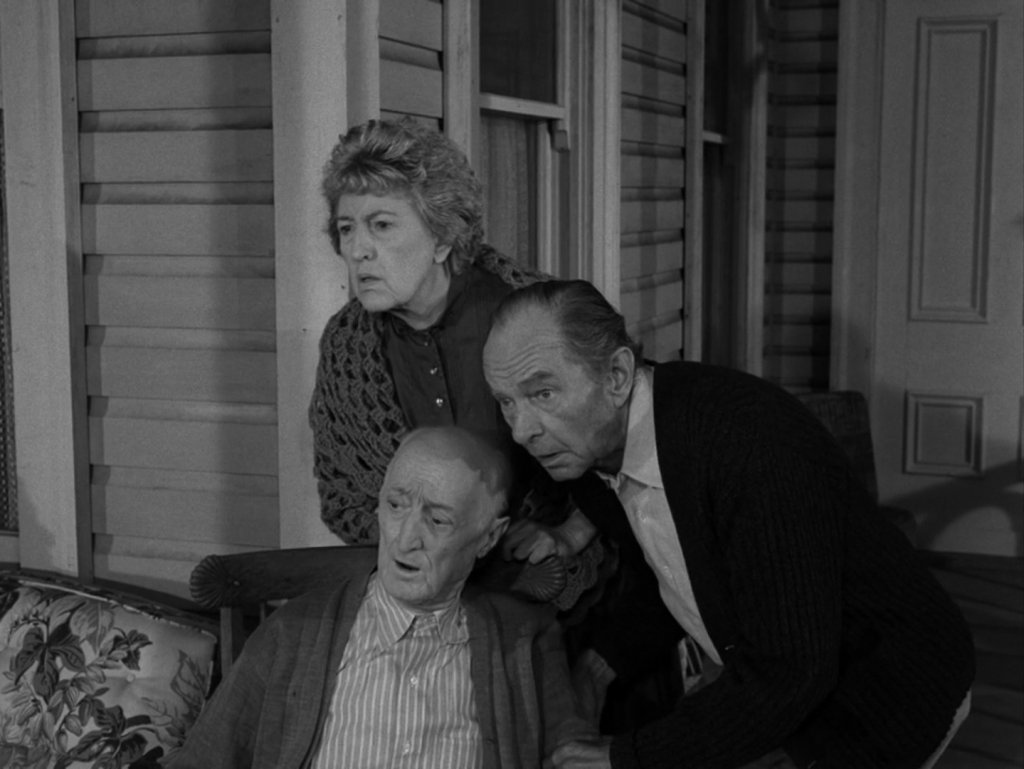
15. AN OCURRENCE AT OWL CREEK RIDGE (1962)
This was the only story that wasn’t made specifically for the show, being a French short film that had already won an award at the Cannes Film Festival in 1962, and won the equivalent Oscar the year later at the Academy Awards. Based on an 1891 short story by Ambrose Bierce, it involves a prisoner being hanged by Union troops. As he falls from the bridge, the rope around his neck snaps, allowing him to make his escape and hopefully return back to his loving wife. Naturally, this being The Twilight Zone, things are not that simple.| MU
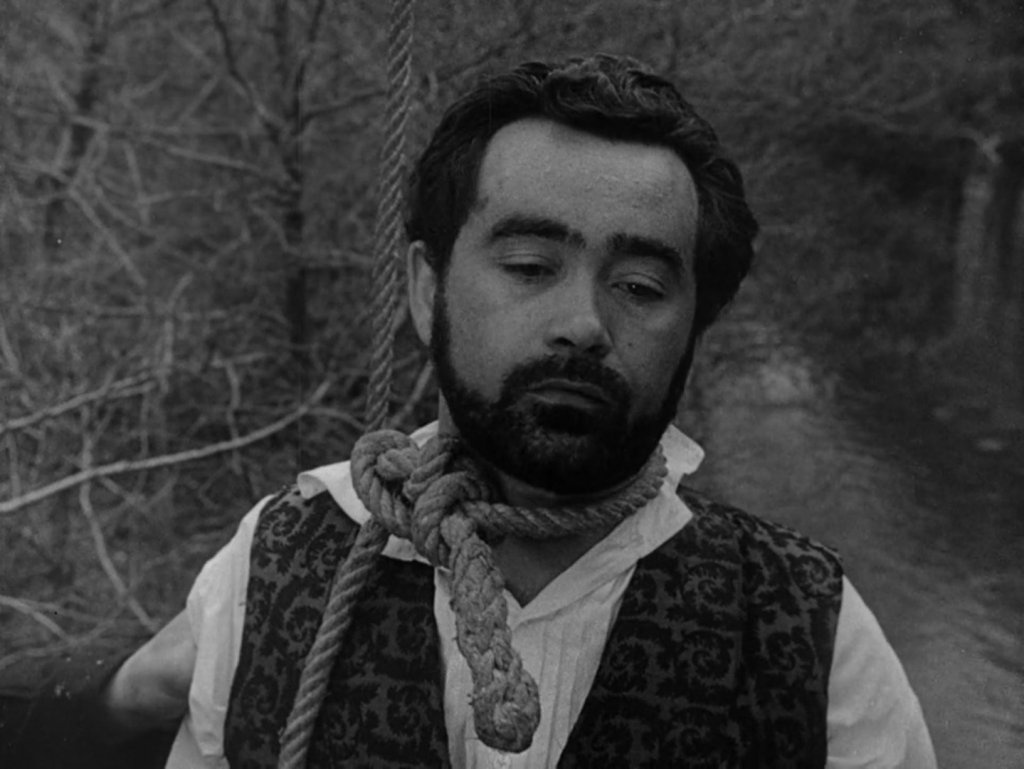
14. AND WHEN THE SKY WAS OPENED (1959)
Three astronauts, Colonel Ed Harrington (Charles Aidman), Colonel Clegg Forbes (the great Rod Taylor), and Major William Gart (Jim Hutton), disappear for 24 hours off Mission Control radar in the experimental X-20 spacecraft, all surviving a crash in the Mojave desert. Alarmed by the vanishing of Harrington, a distressed Forbes tries to convince Gart that the third pilot existed, yet Gart has never heard of Harrington, stating that there were two, not three astronauts in the X-20. Forbes pleads with Gart, telling him that they are systemically being erased from humanity for going someplace they weren’t supposed to go and that something made a mistake for letting them come back. Rod Taylor owns this episode. His panic from figuring out the truth and the horrifying look in the mirror when he realises he’s next to vanish is truly chilling. Directed by Douglas Heyes from a script by master scribe Richard Matheson, the tension in this sci-fi mystery, much like the X-20 itself, moves at an impressive pace. | WSB
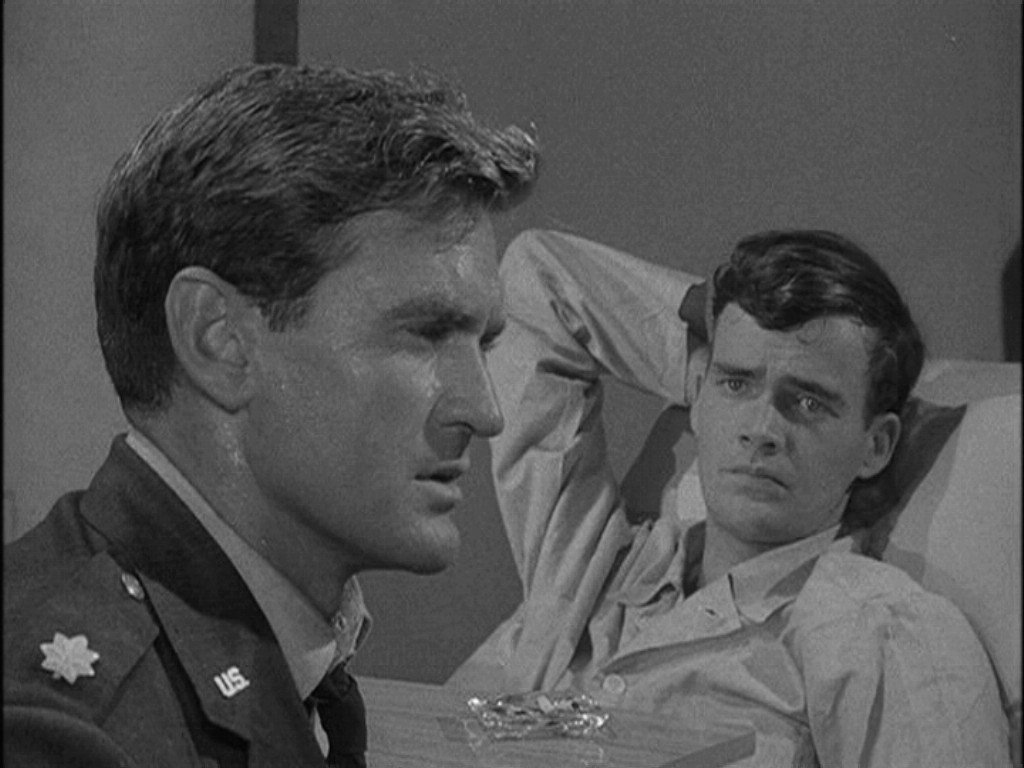
13. NIGHT CALL (1964)
Elderly spinster Elva Keen (Gladys Cooper) is awoken by the shrill ringing of her telephone in the middle of the night. The line is so badly corrupted by static that she can’t discern a voice,and when it becomes a persistently disturbing occurrence, Elva complains to the telephone company with little result. As the nightly calls continue, she begins to hear a voice belonging to a man who seems to have some knowledge of her. Terrified, Elva tells whoever it is to leave her alone. When the telephone company reports they’ve located the unexpected source of the problem, Elva insists on visiting the site. It is there that she discovers the identity of the mysterious caller and heartbreakingly realises that she will never receive any more night calls. Night Call was based on Richard Matheson’s Long Distance Call, but as there had already been an episode by that title (see entry #19), the name was changed. Horror maestro director Jacques Tourneur (Cat People, I Walked with a Zombie, Night of the Demon) crafted a eerily effective episode. Who hasn’t been awakened by the disorientating, skin crawling terror of a late night phone call? It’s somehow scarier in black and white. | CJ
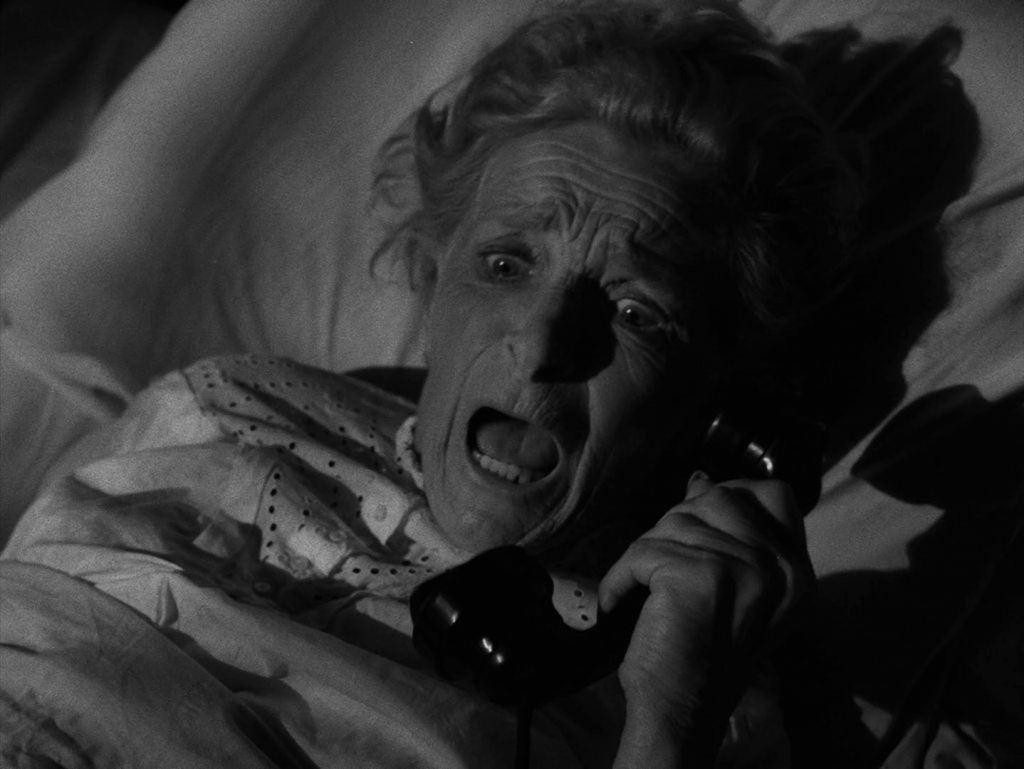
12. A STOP AT WILLOUGHBY (1960)
In this darker, often bleak counterpoint to Walking Distance (see entry #2) contemporary advertising executive Gart Williams is a man teetering on the edge of a chasm. He hates his boss, his job, his wife, and everything they have made him become, all that they expect of him. On his train journeys home, Williams begins falling asleep and waking up at the station stop in Willoughby, an idyllic town in the distant past of the 1880s that no one in real life has ever heard of. As the pressure mounts and Gart begins to crack, he becomes sure that the next time he wakes up in Willoughby, he will stay for good. Where Martin Sloan’s adventure is melancholy but lined with compassion, A Stop at Willoughby is uncompromising in its exploration of the fallacy that you can simply walk off a train into a better, happier life. Ambiguous and with a bruising end, it’s a sharp reminder that sometimes it’s too late for some of us to be anything else than what we are. But Serling could never write anything without hope and so it goes here: don’t retreat into fantasy or give up, change what you want to change now. Or be forever a part of The Twilight Zone. | JE
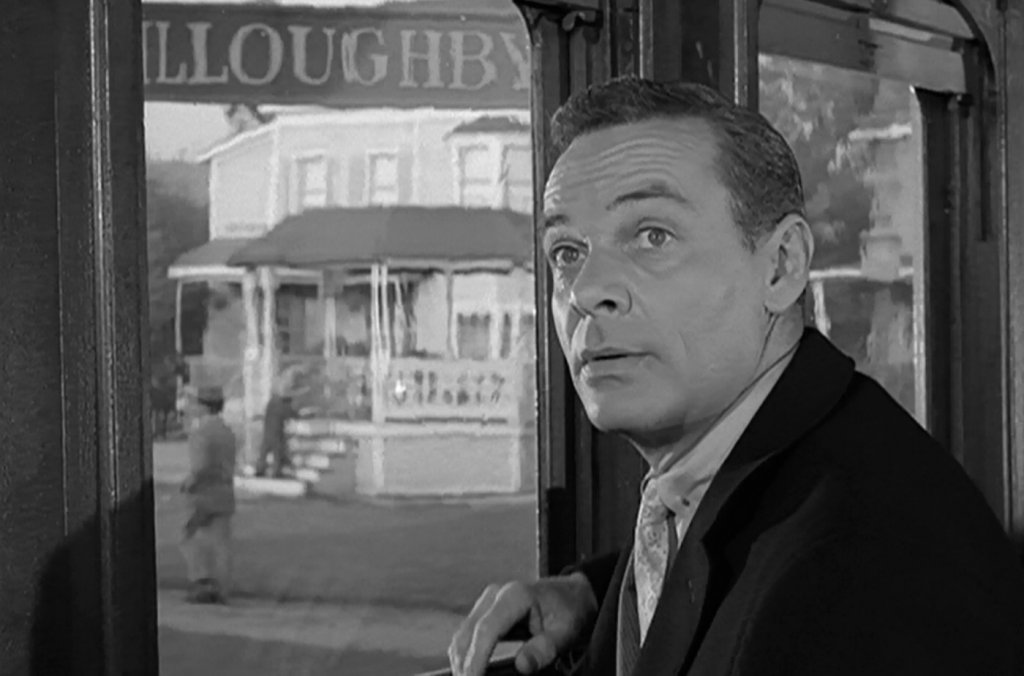
11. WHERE IS EVERYBODY? (1959)
A series opener that pulled no punches, Where is Everybody? explored what many of us fear the most: being totally, utterly alone. Serling was exposing universal truths about the human race and he was coming out swinging. The episode opens with a confused man waking up to find himself unsure of where or even who he is. (Side note: this is the only TZ episode filmed at Universal Studios and the ‘town’ he explores is the same set featured prominently in the Back to the Future films.) As he attempts to figure out what’s going on, he realises he’s totally alone. This fact quickly terrifies him and eventually reduces him to a blubbering mess. It’s then revealed he’s actually participating in a government experiment designed to test man’s ability to handle the solitude of single-manned space flight, an as yet unattained achievement in 1959. The themes of aloneness and loneliness are explored often throughout the series, as well as the concept of space travel. Just two years after this first episode aired, Soviet cosmonaut Yuri Gagarin became the first man to orbit the Earth, turning Serling’s (and everyone else’s) dreams into reality. | VB
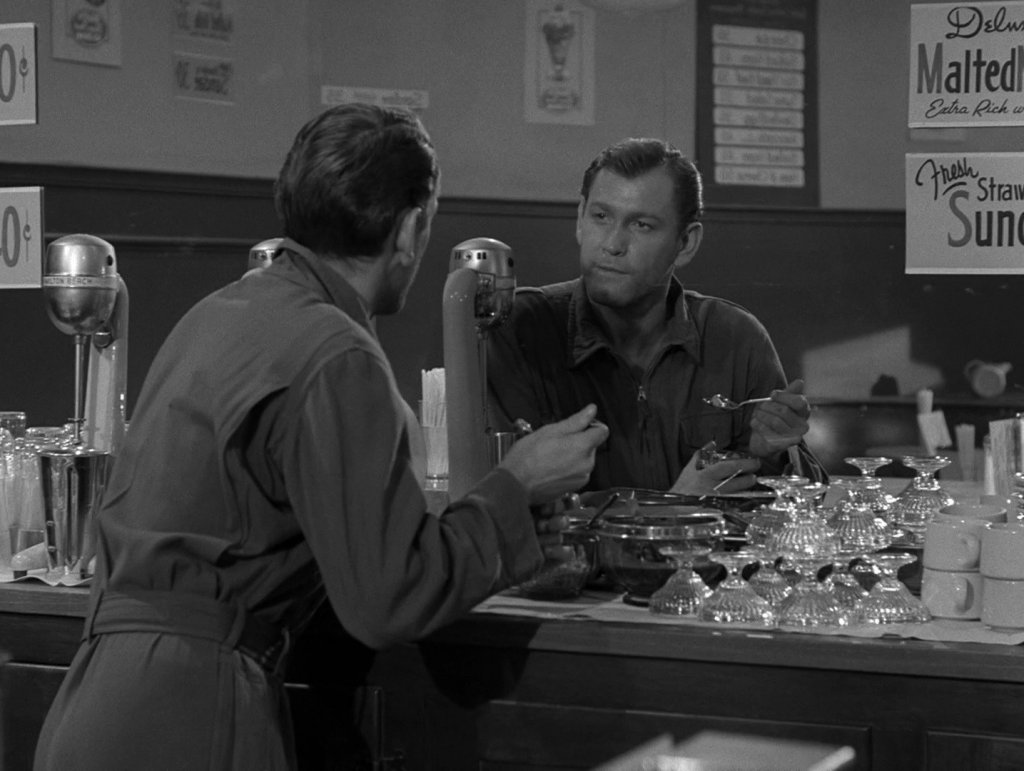
10. THE HOWLING MAN (1960)
Shortly after the First World War, hiker David Ellington seeks refuge in an isolated monastery during a violent storm. The head of the order, Brother Jerome (John Carradine), tells Ellington that he cannot stay, before he collapses. When Ellington regains consciousness, a strange howling lures him deeper into the monastery where he discovers a raggedy man held prisoner. The prisoner informs Ellington that Brother Jerome is mad and refuses to let him go. When Ellington confronts Jerome the monk reveals the true nature of the howling man. Ellington then decides on a course of action that has dire consequences for the world. The Howling Man brims with atmosphere, with its crashing thunder, pounding rain and screaming wind effects, and director Douglas Heyes’ use of off-kilter camera shots expertly conveys Ellington’s delirium. Also impressive is the in-camera transformation of the Howling Man into his true form as he strides through the monastery. Adapted from Charles Beaumont’s short story, the author envisioned that the prisoner would be imprisoned by a cross upon his cell door. Fearful of a Bible Belt backlash, the producers substituted a cross with the ‘staff of truth’, over Beaumont’s objections. | CJ
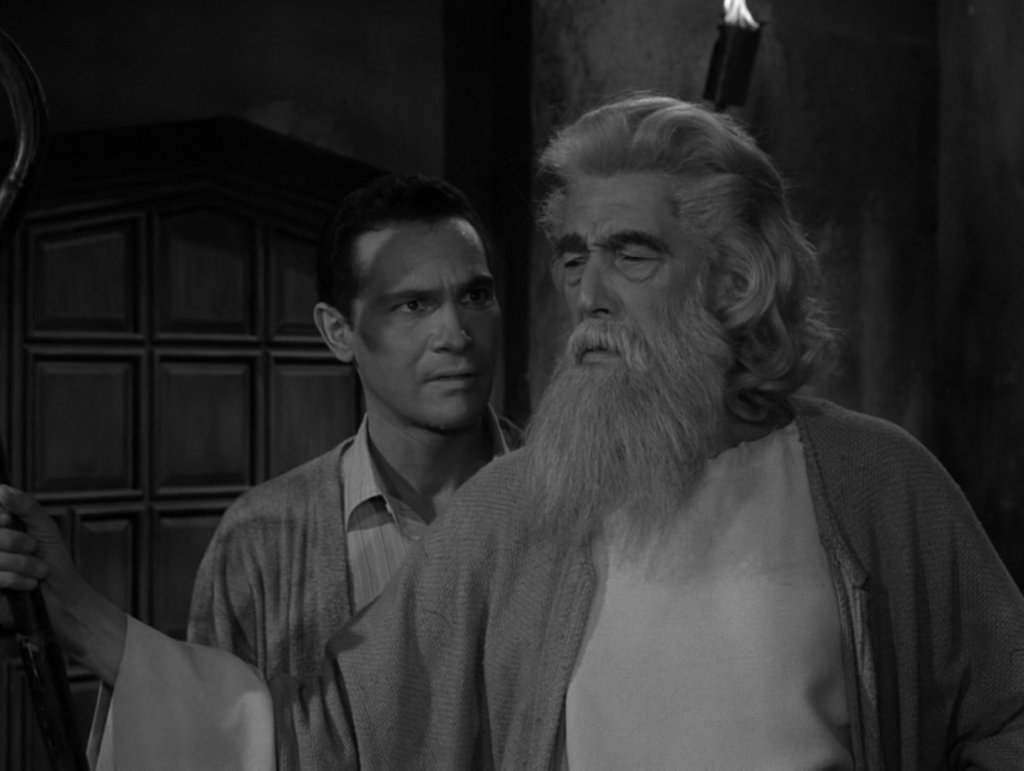
9. IT’S A GOOD LIFE (1961)
Stan Lee taught us that with great power comes great responsibility. In this episode from the third season, Rod Serling shows us that the opposite can be equally true with one of the series’ most chilling tales. One day, either the rest of the world disappeared leaving behind only the village of Peaksville in what used to be Ohio – or Peaksville itself was moved somewhere else. Why? Well, the noise and bustle of the rest of the world displeased the village’s most powerful resident, so he changed things more to his liking. Just as his elderly aunt’s singing earned the wrath that left her a vacant, empty husk. The residents of Peaksville have learned to think only happy thoughts, because this monster can read minds, resulting in bad, critical or incorrect thoughts being instantly punished. Such is life under the rule of Anthony Fremont (Billy Mumy), who has God-like powers. If Anthony wills it, it happens. There is no regret, no thought of consequence – only the instant gratification of Anthony getting his own way, because Anthony is only six years old and will send you “to the cornfield” without hesitation. You won’t be coming back. | RP
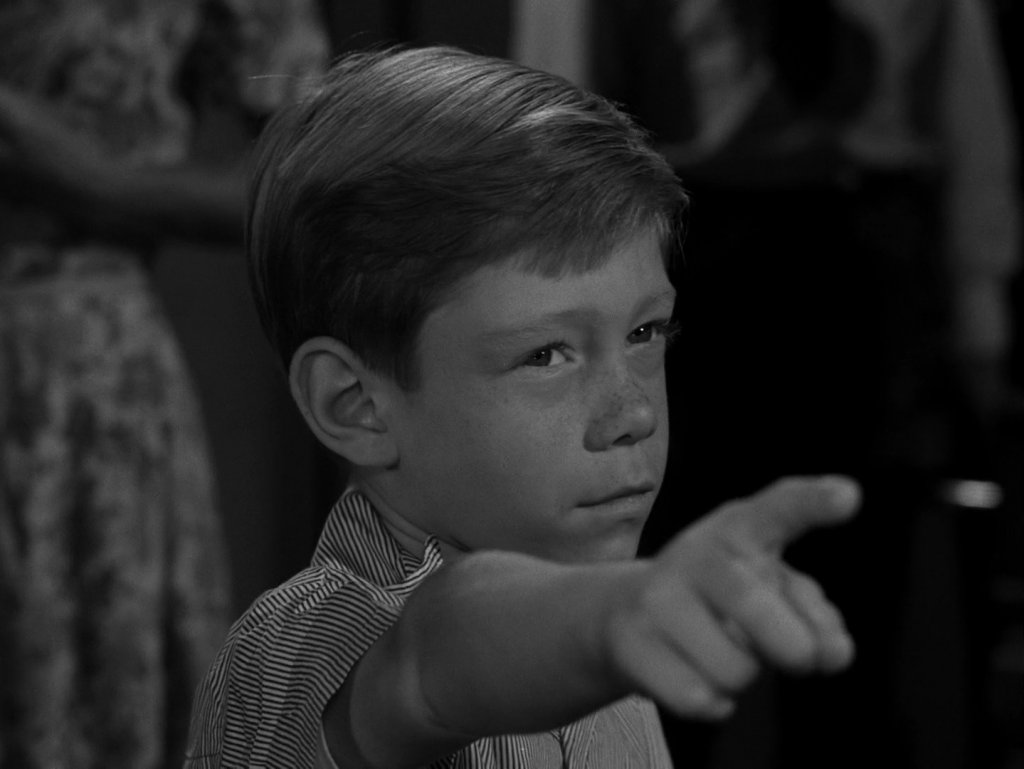
8. EYE OF THE BEHOLDER (1960)
Alternatively known as ‘The One With The Pig People’, Eye of the Beholder is one of the finest TZ episodes for building a palpable sense of suspense and claustrophobia, with its shadowy hospital setting and its cast always kept just out of frame. The story follows an unfortunate young woman who we’re told has a hideous facial deformity. But when her bandages are finally removed, we discover that she looks conventionally attractive – and it’s everyone else in this world who’s hideous. It turns out these monstrous porcine features are the norm in a near future where conformity is compulsory. With some of the most inventive direction seen on the show, bolstered by Bernard Herrmann’s fantastic score, Eye of the Beholder is one of the most accomplished hours of the whole series. | CB
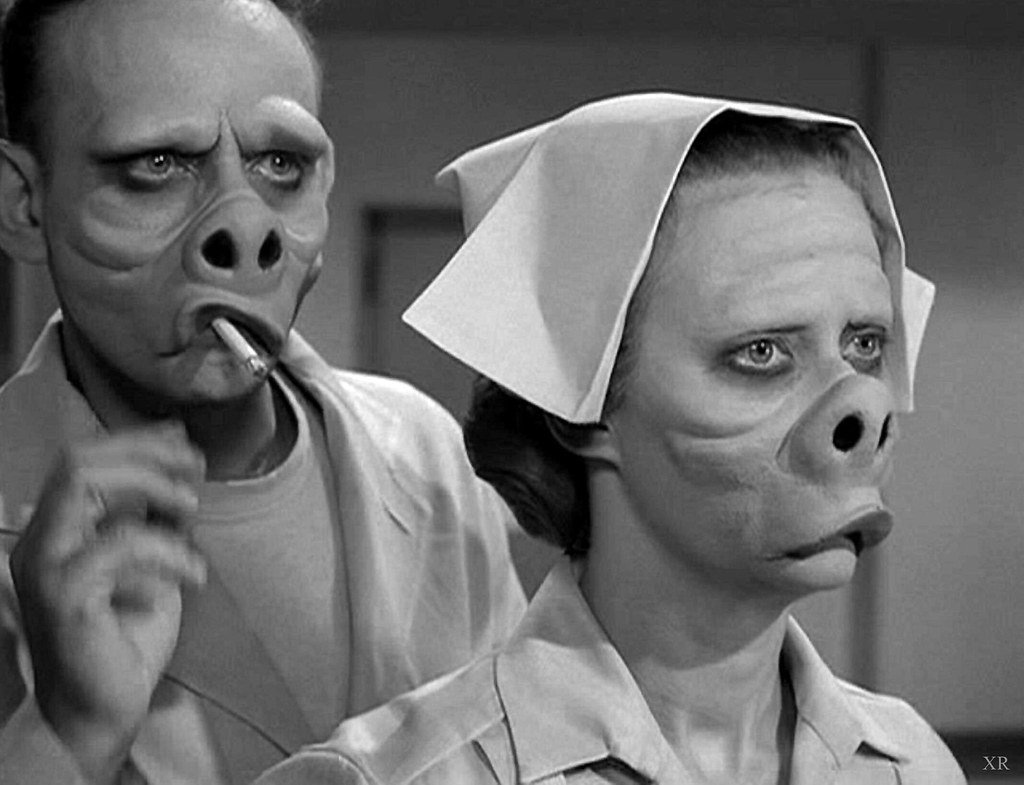
7. TO SERVE MAN (1962)
It’s a cookbook! It’s a cookbook! As with many Twilight Zone episodes, To Serve Man’s big twist has entered pop culture. You’ve no doubt seen it parodied across film and TV (most notably in The Simpsons’ first Treehouse of Horror), but, even if you know where it’s going, it’s still a standout example of the series. The alien Kanamits – led by James Bond’s Jaws himself, Richard Kiel – land on Earth and seemingly come in peace, offering advanced technology as a sign of friendship. Soon, many of the world’s problems are cured and travel to the Kanamits’ home planet is established. But the truth comes out when the real meaning of their book, To Serve Man, is translated. They don’t wish to serve humanity, but to serve us up for dinner. So, OK, it doesn’t make a whole lot of sense – how does that pun work in both English and the alien language? – but it’s still a classic slice of ‘60s sci-fi. | CB

6. THE HITCH-HIKER (1960)
While driving cross country Nan Adams (Inger Stevens) becomes increasingly terrified when she keeps passing the same dishevelled man on the side of the road. No matter how fast she drives, no matter the distance she travels, the hitch-hiker is always ahead of her, patiently waiting. Rod Serling adapted The Hitch-Hiker from Lucille Fletcher’s original radio play, which itself had been broadcast several times, most notably on The Orson Welles Show (1941), Suspense (1942), and The Mercury Summer Theater (1946). Certain music cues composed by Fletcher’s former husband, Bernard Herrmann, for the 1946 radio production were re-used for this episode, while all the various radio productions had starred Orson Welles as Ronald Adams. Serling changed the gender of the protagonist from that of Ronald to Nan as he believed that viewers would have more empathy with a lone woman driving across America, and as anybody familiar with the radio productions will tell you, he was most assuredly correct. Inger Stevens perfectly conveys the escalating terror and vulnerability of Nan’s situation, while Leonard Strong’s deliberately languorous portrayal of the hitch-hiker is increasingly unsettling with each appearance, never more so than when he calmly declares “I believe you’re going… my way?” | CJ
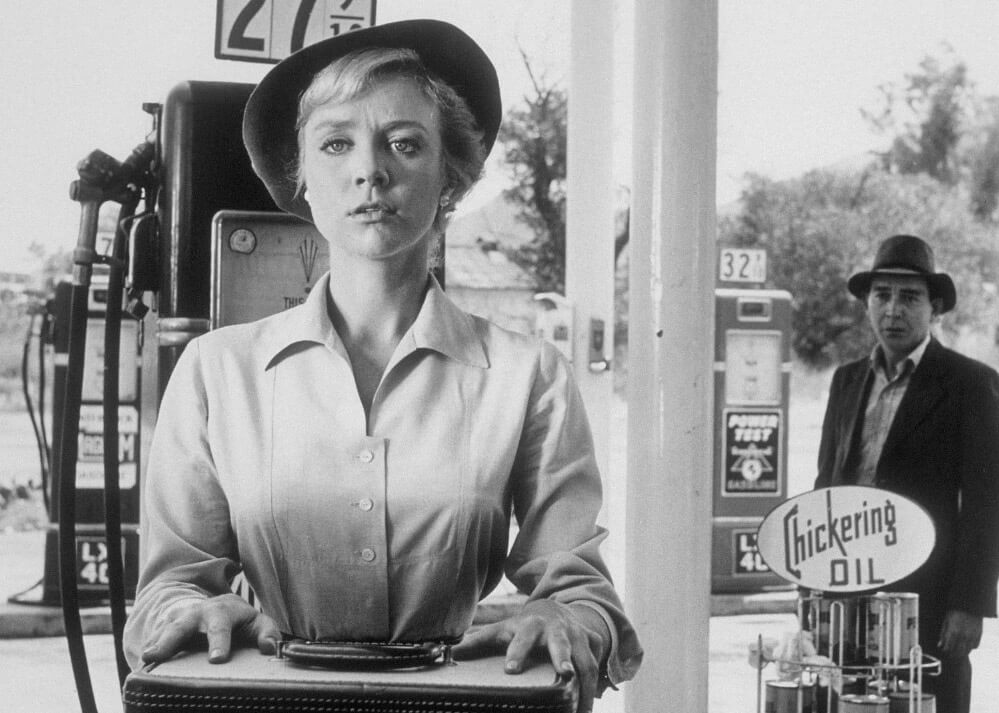
5. NICK OF TIME (1960)
William Shatner made his first foray into that fifth dimension in this second season episode by Richard Matheson in a subtle and thought-provoking tale. The Carters, a young honeymooning couple, are passing through a small Ohio town en route to New York when they need to pull in for a quick repair to their car. Deciding to grab a bite to eat at a diner, Don becomes fascinated by a novelty napkin holder that, for a penny, dispenses fortune cards, predicting the future. Don is by nature a superstitious man and buys into what the cards tell him, as it seems to predict what will happen with an eerie accuracy. But are the cards really telling him his future, or is Don convincing himself that their vague generalities are somehow guiding his life? Don eventually becomes incapable of making any decision for himself about his career and future without asking the machine’s advice. His wife persuades him to walk away from the machine and live his life, his way. But waiting for the couple to leave the booth is another pair, who are anxiously waiting for the machine’s permission to leave town… | RP
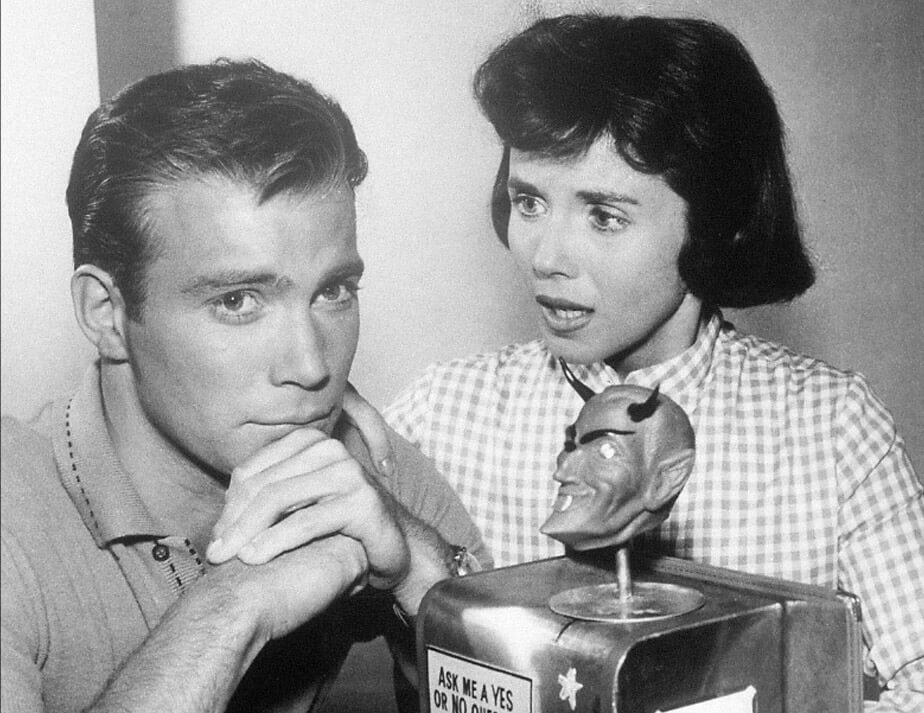
4. THE MONSTERS ARE DUE ON MAPLE STREET (1960)
The Monsters Are Due on Maple Street, like all good (and bad) 1950s/’60s sci-fi, is not about aliens at all. Despite its central premise – that aliens have landed and there are some living amongst us – it is an analogy for the real red menace – not from Mars, but from the USSR. Yes, The Monsters Are Due on Maple Street is one of those stories, where liberal, pinko Hollywood fought back against the McCarthyite witch-hunts by hiding its message in plain sight. The twenty-second episode of the show’s first season, it begins early one summer evening on Maple Street, which could be a stand-in for any suburban street in the US of the time. Children are playing in the street, the men are fixing cars, and something flashes and roars overhead. Initially thinking it to be a meteor, the neighbours are soon convinced – by a child talking about something that happened in his comic books – that aliens have landed, and that some of their number are fifth columnists. The descent into madness is gradual, and then sudden; suspicion and conjecture brings about death and destruction. At its close, it is revealed that there were aliens, and that they manipulated the fear and panic, turning the neighbours against one another. As with many classic Zone stories, there are lessons that can still be learned. | AB
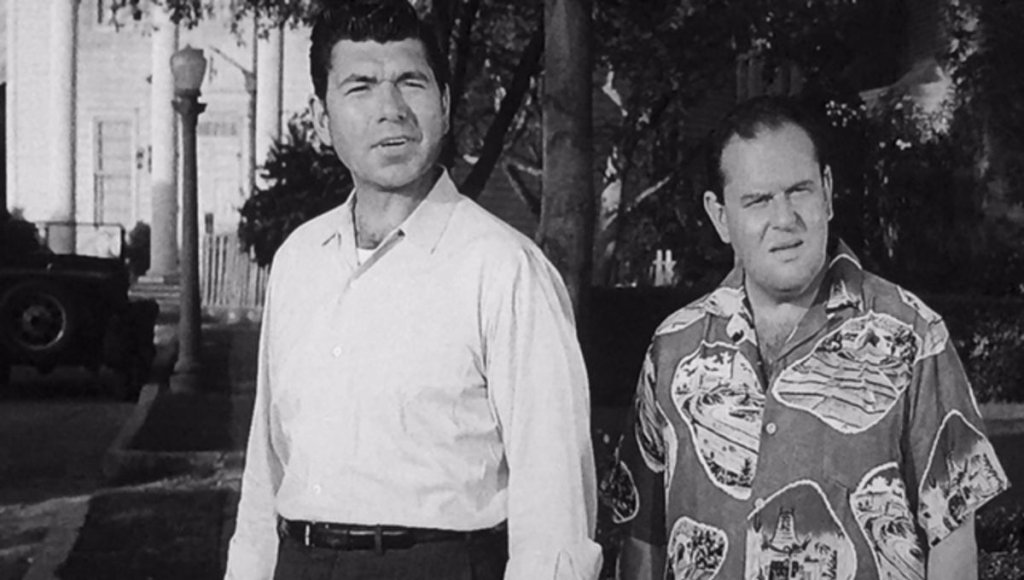
3. TIME ENOUGH AT LAST (1959)
The eighth episode of the original series, Time Enough at Last is the bibliophile’s worst nightmare and one of the most heartbreaking stories ever committed to screen. Scripted by series creator Rod Serling, Burgess Meredith is Henry Bemis, a henpecked bookworm whose life is made a misery by his wife, and by his boss at the bank where he works. All Henry wants to do is read, but life gets in the way – that and the cruel, book-destroying woman he’s somehow ended up with. One day, while stealing a few moments to read alone in the bank vault, a hydrogen bomb destroys the city, killing everyone in it; only Henry survives, due to the vault’s impenetrable walls. Emerging into the solitary existence he once craved, Henry discovers that the town library has also survived the bomb, and that all the books he ever wanted to read are waiting for him. Bliss! And then he trips and his glasses, without which he is practically blind, fall to the ground and smash, beyond repair. “That’s not fair! That’s not fair at all!” cries Henry, and it certainly is not. | AB
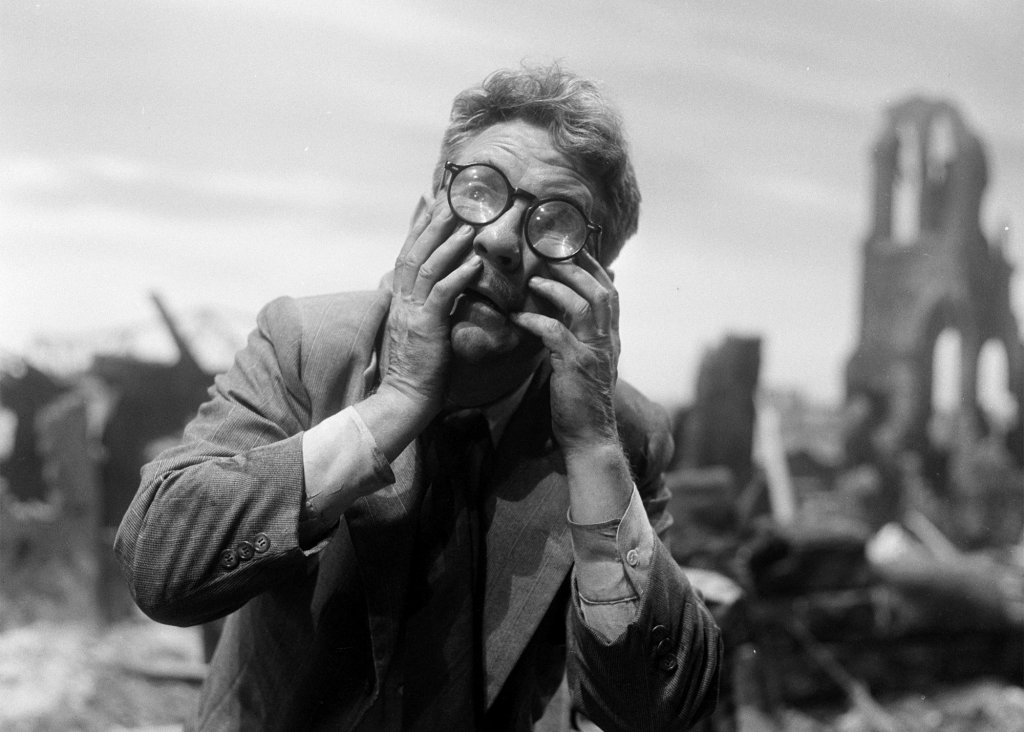
2. WALKING DISTANCE (1959)
Walking Distance tells of advertising executive Martin Sloan, a man crumbling under the relentless pressure of his big city adult life and compelled to drive back to the town he grew up in and hasn’t returned to since he was a boy, Homewood. When he arrives, it is as if the world has stopped spinning and everything is as it was when he was young. Sloan discovers that somehow, he has travelled back into the past – his past – and he is determined to stay in that simpler time, regardless of how impractical or even dangerous it may be. Rod Serling completely understood the attractions and dangers of nostalgia and in Walking Distance, he expertly explores our longing to go back home, as it were, to a time that felt emotionally easier and less battering than grown-up life, and how that impossible yearning for what has already been can damage our here and now, or what could be. It is a masterful piece of writing and married to outstanding acting, direction, editing and Bernard Herrmann’s beautiful score is a shining example of The Twilight Zone at its best: wonderfully, painfully human, and alive with wisdom and hope. | JE
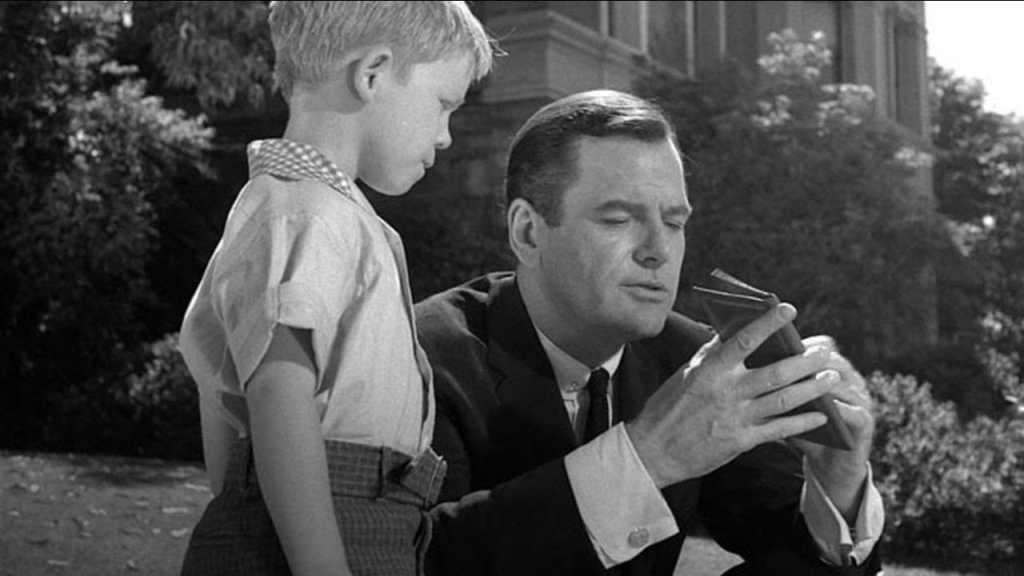
- NIGHTMARE AT 20,000 FEET (1963)
Written by Richard Matheson, this fifth season story is the best of the best. William Shatner stars as Robert Wilson, an anxiety-suffering air traveller who is on his way home from a sanitarium, following a mental breakdown that happened on a similar flight several months earlier. But whereas that flight concluded with Wilson’s breakdown, this one is just beginning. As he tries in vain to relax, the increasingly twitchy Wilson spots a furry creature making its way along the wing toward one of the engines. He tries to raise the alarm, but of course, nobody believes him. Nobody can see the gremlin on the wing apart from Wilson. Is it really there, or is it cunning enough to hide when Wilson draws attention to it? His wife is increasingly convinced Wilson is relapsing and becoming hysterical in the process – to the point of taking a gun and shooting at the creature, which is tearing away at the engine. Was it really there, or did the plane have a technical malfunction? As medical staff take Wilson away in a straitjacket, the engineers will soon spot claw marks on the wing… | RP
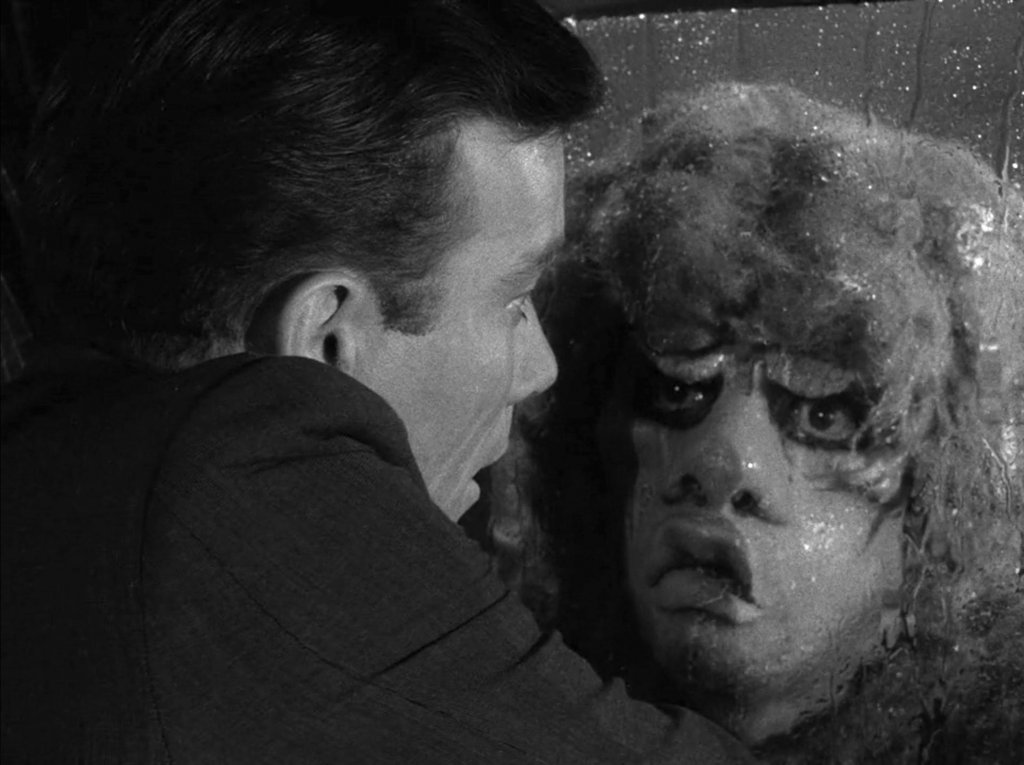
The Twilight Zone returns to our screens on Legend from January 1st, 2023. You can tune into Legend via Sky 148 / Virgin 149 / Freeview 41 / Freesat 137
Words: ROBIN PIERCE • ALAN BOON • CHRISTIAN JONES • JAMES EVANS • VANESSA BERBEN • EARL STRYDER • CHRISTIAN BONE • WHITNEY SCOTT BAIN • ED FORTUNE • MARTIN UNSWORTH
[This article was originally published in issue 465, October 2019.]

